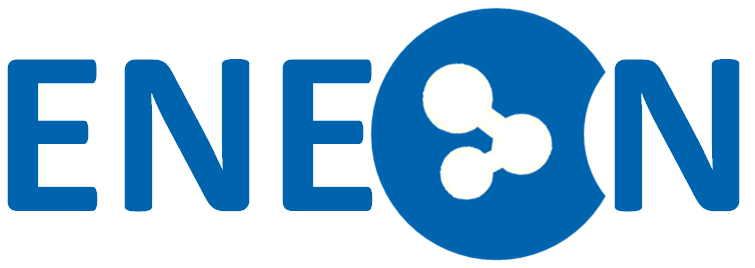| Assessing Gaps to Support Prioritization: Solving complex societal issues increasingly depends on information and knowledge derived from Earth observations and in Europe a rich landscape of Earth observation networks and actors aims to collect and process the necessary observations to satisfy these information and knowledge needs. Nevertheless, there are many gaps and the goal is to identify and assess these gaps in support of decisions on which gaps to address with high priority. |
The workshop addressed key issues associated with the societal benefits of Earth observations and the exploitation of Earth observation for societal policy and decision making.
SCOPE AND OBJECTIVES OF THE ENEON WORKSHOP
| Building a collaborative ENEON to inform policies and actions to address complex societal issues: Many in situ networks in Europe collect valuable Earth observations, and European institutions are involved in numerous global networks. A lack of cross-domain collaboration and coordination the interaction between Earth observation communities and policy and decision makers hinders a full exploitation of the integrated observations for societal applications. ENEON aims to develop coordination and collaboration between networks, the processing, and the generation and dissemination of products to better serve the growing societal needs for environmental intelligence.
|
ConnectinGEO is engaged in exploring the benefits and options of constituting a European Network of Earth Observation Networks (ENEON) that encompasses current networks in Europe in a single entity. The ENEON is designed as a forum for discussing gaps in the Earth observation networks and proposing concrete solutions to the European Commission in terms of completeness but also for ensuring continuity of critical infrastructures both in-situ and space based. It also serves as a coordination point for the European contribution to GEOSS with a focus on in-situ networks and encouraging the alignment of a transversal set of Essential Variables that is currently advocated by GEO.
The Objectives of the ENEON workshop were to:
- Bring together the main current Earth Observation networks in Europe, including those that are umbrella initiatives;
- Continue the development of an ENEON strategy from organizational and subject points of view;
- Assess the extent to which ENEON is embedded in the European Earth observation landscape;
- Outline a more general, “ENEON-based” concept that may serve as best-practice/model to be used to achieve similar objectives in other regions of the world;
- Discuss the status of work in the ENEON components and the work for the next year;
- Explore options for ENEON contributions to the GEO Work Programme.
QUESTIONS TO BE ADDRESSED BY SPEAKERS
The speakers are asked to give an overview of the status of their network and its potential linkages to higher level coordination and collaboration networks. All speakers should address the same set of questions to get a coherent overview of the status. These question include:
Introduction of the network:
- What network are you representing and what is your role in this network?
- What are the main objectives of the network?
- Who are the main contributors to your network?
- What form of commitment do you have for the maintainance your network?
- How large is your user base and who are your users?
- Do you maintain a database of user needs and observational requirements?
- What are the costs and efforts of maintaining the network?
- What are your main funding sources?
- What are the key issues for sustainability of your network running?
About data:
- What observations does your network collect and what products are produced?
- What are the spatial and temporal characteristics and limits of your network?
- How is the data archived and made accessible to users?
- Do you address data quality in some way?
- Are there risk for data continuity and how are data preservation and network continuity addressed?
- What are the conditions (licenses) for sharing your data and products with users?
- What key interface standards are used in making data and products available?
- Are there known observational requirements that your network is not meeting?
- Are there observations that are needed but not captured by your network or by other networks that you have access to or products that are not generated?
About a network of networks:
- What coordination and collaboration interfaces do you have with other networks?
- Is you network contributing to GEO(SS) and if so, what is this contribution? Could ConnectinGEO help to enhance your contribution to GEOSS?
- Are there additional interfaces that would be desired and what would be the main benefits of these interfaces?
- Do you think that your network could benefit from the existence of an ENEON or a similar network?
- From you point of view, how should an ENEON be organized and managed?
OUTPUT
OUTPUT OF THE ENEON WORKSHOP
The high-level output of the workshop will be a report describing the status and plans of ENEON in terms of organizational and subject-focused aspects.
SESSION OVERVIEW
The program will include a sequence of plenary sessions focusing on various aspects of the ENEON and a review of existing EO networks in Europe. A round table discussion will elaborate the potential benefits and roles of ENEON.
PROGRAM AND SCHEDULE
PROGRAM
Wednesday, October 12, 2016
| 0830 - 0930: | Registration |
| 0930 - 1030: | Session 1: ConnectinGEO and ENEON: Introduction and Achievements (Chairs: Ian McCallum, IIASA) |
| 0930 - 0945 | Michael. Obersteiner (IIASA): GEOSS and in situ data (presentation) |
| 0945 - 1000 | Joan Maso (CREAF): The ConnectinGEO Project |
| 1000 - 1020 | Ian McCallum (IIASA): ENEON Introduction (presentation) |
| 1020 - 1035 | Ivette Serral (CREAF): Mapping the Network Landscape (presentation) |
| 1035 - 1050 | Lionel Menard (ARMINES): Meta network in solar energy: A contribution to ENEON (presentation) |
| 1050 - 1110: | Coffee Break |
| 1110 - 1240: | Session 2: ENEON in Support of European Policy Making and Implementation (Chair: Joan Maso, CREAF)
|
| 1110 - 1135 | Michel Schouppe (EC): ENEON from a European Commission perspective (presentation)
|
| 1115 - 1140 | Henrik Steen Anderson (EEA): Copernicus in situ Component - Overall Coordination (presentation) |
| 1130 - 1150 | Cristina Guerreiro (European Topic Centre for Air Pollution and Climate Change Mitigation (ETC/ACM) and NILU): Use of in-situ data for air quality assessment - The future of AQ monitoring for forecasting and policy support (presentation) |
| 1150 - 1215 | All: Discussion |
| 1215 - 1350: | Lunch |
| 1350 - 1500: | Session 3 ENEON support to GEO activities: a European Contribution to the GEO Work Programme (Chair: Jay Pearlman, IEEE)
|
| 1350 - 1410 | Giovanni Rum (GEOSec): GEO and ENEON (presentations) |
| 1410 - 1430 | Christoph Häuser — (EUBON): EUBON: governance, data policy and in-situ data (presentation) |
| 1430 - 1440 | Hans-Peter Plag (Tiwah): ENEON and GD-06 (presentation) |
| 1440 - 1510 | Geoff Sawyer (EARSC): ENEON and the Industry Perspective (presentation) |
| 1510 - 1540 | Stefano Nativi (CNR): Addressing Gaps in European Earth Observation Infrastructure, Services, and Knowledge: the GEO DAB possible contributions (presentation) |
| 1540 - 1800: | Session 4: The Future of ENEON (Chairs: Jay Pearlman) |
| 1540 - 1600 | Martine de Maziere (GDACC): NDACC - Network Functioning and Governance |
| 1600 - 1620: | Coffee Break |
| 1620 - 1635 | Ian McCallum: The Future of ENEON (presentation) |
| 1635 - 1800 | All: Discussion: What is the niche of ENEON and how best to complement existing NoNs in Europe |
| 1900 - 2100: | Social Dinner in Vienna |
Thursday, October 13, 2016
| 0830 - 0900: | Registration |
| 0900 - 1030: | Session 5: The Future of ENEON (Chairs: Antonio Bombelli)
|
| 0900 - 0930 | Ari Asmi (U. Helsinki): Envriplus, research infrastructures and networks |
| 0930 - 0945 | Discussion of recommendations from yesterday's discussion. |
| 0945 - 1030 | Panel Discussion |
| 1030 - 1100: | Coffee Break - ENEON SUMMARY |
| 1100 - 1230: | Session 6: ENEON Business and Wrap-up (Chairs: Joan Maso, Ivette Serral, Ian McCallum)
|
| 1100 - 1230 |
- Migrating ENEON Social Network/virtual marketplace
- Relations to other initiatives
- Sustainability of ENEON - Considerations of a Pilot ENEON, inclusion into GEO as a NoN
- Funding Possibility: ERA-PLANET, NextGEOSS, COST Action, ERIC, ...
- Summary and resolutions
|
| 1230 - 1330: | Lunch |
SCHEDULE
Overview October 10-14, 2016
Note that the Session titles are preliminary and may change to some extent in the next weeks.
| Date |
|
|---|
| Monday, October 10, 2016 |
| 08:30-13:00 | Pre-Workshop Meetings |
| 12:00-13:30 | Registration |
| 13:30-18:00 | Gap Analysis and Prioritization Workshop |
| 13:30-15:30 | Session 1: Introduction to the ConnectinGEO Approach to Gap Analysis and Prioritization |
| 15:30-16:00 | Coffee Break |
| 16:00-18:00 | Session 2: “Top-Down” approach to Gap Analysis: Thread 1: Identification of a collection of observation requirements;
Thread 2: Research programs aims and targets |
|
| Tuesday, October 11, 2016 |
| 08:30-09:00 | Registration |
| 09:00-18:00 | Gap Analysis and Prioritization Workshop |
| 09:00-10:30 | Session 3: “Bottom-Up” approaches to Gap Analysis: Thread 1: Consultation process, Thread 2: GEOSS Discovery and Access Broker analysis and Thread 3: Industry-Driven Challenges |
| 10:30-11:00 | Coffee Break |
| 11:00-12:30 | Session 4: Making Gap Analysis Results Usable |
| 12:30-13:30 | Lunch |
| 13:30-15:30 | Session 5: Assessment of the Gaps Identified so far |
| 15:30-16:00 | Coffee Break |
| 16:00-18:00 | Session 6: Steps Towards Prioritization |
| 19:00-21:00 | No-Host Dinner |
|
| Wednesday, October 12, 2016 |
| 08:30-09:00 | Registration |
| 09:00-18:00 | ENEON Workshop |
| 09:00-10:30 | Session 1: ConnectinGEO and ENEON: Introduction and Achievements |
| 10:30-11:00 | Coffee Break |
| 11:00-12:30 | Session 2: ENEON in Support of European Policy Making and Implementation |
| 12:30-13:30 | Lunch |
| 13:30-15:30 | Session 3: ENEON support to GEO activities: a European Contribution to the GEO Work Programme |
| 15:30-16:00 | Coffee Break |
| 16:00-18:00 | Session 4: The Future of ENEON |
| 19:00-21:00 | No-Host Dinner |
|
| Thursday, October 13, 2016 |
| 08:30-09:00 | Registration |
| 09:00-12:30 | ENEON Workshop |
| 09:00-10:30 | Session 5: The Future of ENEON |
| 10:30-11:00 | Coffee Break |
| 11:00-12:30 | Session 6: ENEON Business and Wrap-Up (open session) |
| 12:30-13:30 | Lunch |
| 13:30-18:00 | ConnectinGEO Project Meeting |
|
| Friday, October 14, 2016 |
| 08:30-09:00 | Registration |
| 09:00-12:30 | ConnectinGEO Project Meeting |
|
PRACTICAL DETAILS
PARTICIPATION
The Gap Analysis and Prioritization Workshop and the ENEON Workshop are open to representatives of European groups, networks, and services engaged in European or global earth observation activities, including the maintenance of in situ networks and value-adding processing of observations to provide advanced products and services.
The ConnectinGEO Project meeting is by invitation only.
DEADLINES
Deadlines are identical for both workshops. Please, try to submit abstracts and register prior to the deadlines given below to support the planning of the event. However, abstracts and registrations will be accepted after the deadlines.
- Submission of abstracts: September 21, 2016.
- Registration deadline: September 21, 2016.
COMMITTEES
Local Organizing Committee:
- Ian McCallum
- Stephen Fritz
- Ivette Serral
Program Committee ENEON Workshop:
- IIASA: Ian McCallum, Steffen Fritz
- CREAF: Joan Masó, Ivette Serral
- GEO Secretariat: Giovanni Rum
- TIWAH: Hans-Peter Plag, Shelley Jules-Plag
- CMCC: Antonio Bombelli
- CNR-ISSIA: Palma Blonda
- IEEE: Jay Pearlman, Françoise Pearlman, Siri Jodha Khalsa
- CISC: Emili García-Ladona
- BIRA-IASB: Martine De Maziere
- NILU: Kjetil Tørseth, Wenche As
- ARMINES: Lionel Menard, Lucien Wald
ACKNOWLEDGEMENTS
Support for the Workshop
 |
The workshops are organized as workshop of ConnectinGEO, a project which received funding from the European Union Framework Program for Research and Innovation (SC5-18a-2014) under grant agreement no. 641538. |
 |
The workshops are hosted by IIASA. |
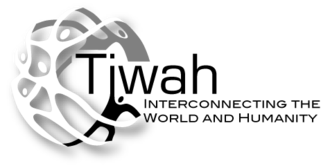 |
Tiwah supports the Workshop by hosting and maintaining the GSTSS. |
Technical Advice and Support for the Workshop
| |
The local organizing committee for the workshops is hosted by CREF, Barcelona. |
ABSTRACTS
Speakers are not asked to submit abstracts for their presentations. However, those who would like to provide an abstract are invited to do so by sending the abstract to hpplag @ tiwah.com. Abstracts made available prior to the events will be included in the program pages.
REGISTRATION
Go directly to the registration page (using EventBride). Note that you need to click on "Select a Date" first to get the page with the "Register" button. Select any of the dates and then click on "Register". After that, you can indicate which of the events you want to attend.
Pre-Registration is strongly recommended before September 21, 2016 to help the organizers in the planning of the events. To register for the individual events, a registration page is available here. Note that this page is using EventBride for the registration. You can indicate which of the three events you plan to attend. For the project team meeting, the organizers reserve the right to accept or reject applications from individuals not representing a project partner.
If you plan to present at one of the events, please use the abstract submission page to submit an abstract.
VENUE
The ConnectinGEO and ENEON workshops will take place at the International Institute of Applied Systems Analysis (IIASA) located in Laxenburg, Austria:
IIASA
Schlossplatz 1
A-2361 Laxenburg
Austria
Tel.: (+43-2236) 807 0
Fax: (+43-2236) 71313
E-mail: inf at iiasa.ac.at
Information on the specific meeting rooms will be provided on the program pages.
LOGISTICS
Contents
Travel Logistics
Getting to Laxenburg, Vienna and IIASA:
- From Airport to IIASA:
- The fastest and quickest option is to use a taxi. Public transport requires you to go first into Vienna, then South again to IIASA which takes 1.25-1.5 hours in total.
- By Taxi from the Airport or Vienna: A taxi from either the Airport or Vienna to Laxenburg will cost about €40-45 in both cases and take 30 minutes.
- From Vienna International Airport to Hotel Prinz Eugen and/or Motel One Wien-Hauptbahnhof:
- By public transportation from Vienna/Airport: From Vienna Airport you can take the City Airport Train (CAT) to the Wien Mitte/Landstrasse station (the journey takes 16 minutes). There are signs to the CAT train in the airport arrivals hall (http://www.cityairporttrain.com/Infos/Fahrplan.aspx). The shuttle costs €11 one way and €17 for a roundtrip. From here you have to walk – follow the signs, to connect to the underground. The CAT will take you to the Wien Mitte station in Vienna from which you can either:
- Take a taxi that costs ca. 10 EUR to your hotel — 5 minutes, or
- Take the U4 (green line) at Wien Mitte station changing at Karlsplatz to the U1 (red line) 2 stops and get off at Hauptbahnhof (Vienna Central Station). The Hotel Prinz Eugen is 450 meters and Motel One Wien Hauptbahnhof is 600 meters from the station. See the map below to get an overview of the area.

- You can also take the “schnellbahn” train from Vienna Airport into the city — this is a bit slower but cheaper than the CAT.
- You can also take a bus into the city — buses are parked just outside the departures area.
- The bus from Vienna to IIQASA in Laxenburg:
- Once in Vienna take the red U1 subway line to Hauptbahnhof Station.
- From Hauptbahnhof follow the bus signs to the exit Bus Terminal, which is located on the left hand side adjacent to the main entrance of the train station.
- We are arranging a charter bus scheduled to depart Vienna Hauptbahnhof at 8:30 am from Tuesday thru Friday (11-14 October). This bus will take you from Hauptbahnhof and will let you off at the bus stop Franz-Josefs-Platz. For that, at the Bus Terminal (Stand N2) in Hauptbahnhof (from the U1/red line stop follow the signs to the bus terminal) take the bus Laxenburg (200). Ian will be at the bus stop to direct you. The trip takes about 30 minutes and costs are covered by IIASA. The bus will leave promptly at 8:30 am!
- If you miss the 8:30 am bus, there is a 8:40 and a 9:10 Bus #200 that will take you to Laxenburg. Please get off at Franz-Josefs-Platz. The trip costs €4.40 for a one-way ticket. At the Bus Terminal (Stand N2) you can catch the #200 bus to Laxenburg (sometimes the bus destination may indicate Eisenstadt). Check with the driver whether the bus you are boarding is going to Laxenburg.
- When viewing the map of Laxenburg, the bus stop is located in the upper left hand corner near the Schloss Restaurant (marked by a bus symbol). The main entrance of the IIASA Schloss is indicated on the center of the map and is about a 2-minute walk from the bus stop.
- For the evenings, you will need to take a regular bus that will pass by the bus stop Franz-Josefs-Platz and take you to Hauptbahnhof. The evening bus schedule is 16:47, 17:17, 17:55, 18:17, and 19:17. For the full bus schedule see here.
- For the evening bus, you will need to pay yourself and the ticket costs €4.40 one way.
 
Location of Bus station and IIASA and the view of IIASA.
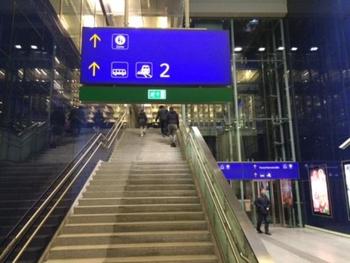

Follow the bus signs up to Favoritenstrasse.
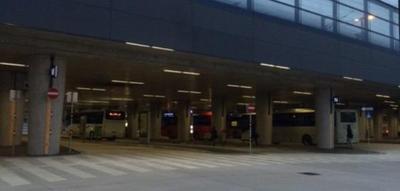
Cross the road to the bus terminal.
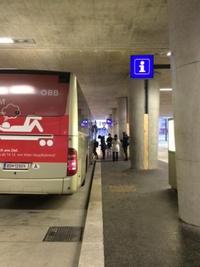
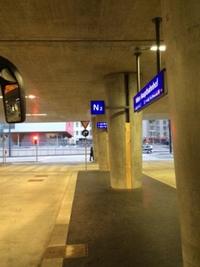
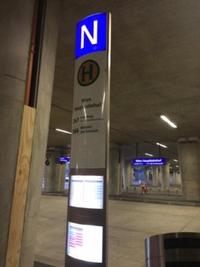
Bus 200 leaves from terminal N2.

Back to contents
Climate and Weather
|
Climate in Laxenburg is moderate but warm. Throughout the whole year there is significant percipitation. The total amount of anual precipiation is on the order of 630 mm. Even the driest month January shows high amounts of precipitation with 34 mm on average. The month with the highest average precipitation is June with 77 mm. The annual average temperature is 9.9 oC.
| 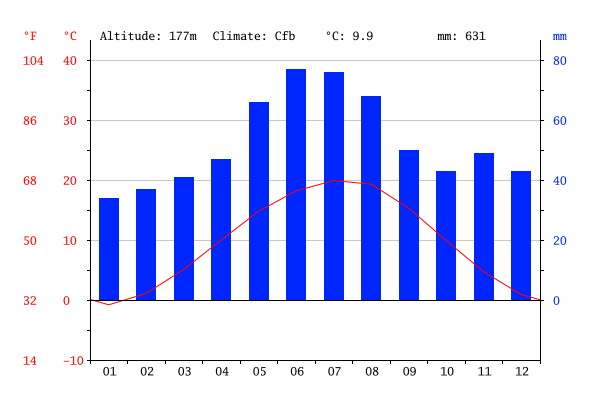
|
For weather, see the most recent full ten-day forecast for Vienna here, which is representative for Laxenburg.
Back to contents
Restaurants
See here for an overview of the local restaurants.
Back to contents
Workshop Dinner
A no-host dinner is planned for Monday evening at the Italian restaurant Gallo Rosso at 18:30. The restaurant is in Laxenburg across the street from the bus stop participants can take immediately after dinner back to the Hauptbahnhof in Vienna.
The plans for no-host dinners on other evenings have not been finalized. Information will be added here as it becomes available.
Back to contents
What to do and visit in Laxenburg?
See wikipedia and City Page for recommendations.
Back to contents
ACCOMMODATION
There are a limited number of hotels in the vicinity of the venue. However, using public transportation, many hotels in Vienna can be reached. A list of most recomended hotels is provided below.
In walking distance of the meeting venue:
The hotels below are the most recommended for the price and proximity to the Vienna Hauptbahnhof from where you will take the bus to IIASA (Laxenburg) which takes 35 minutes (see logistics). The hotels (Prinz Eugen, Motel One Wien Hauptbahnhof, Hotel Beim Theresianum) are all walking distance to the Hauptbahnhof. We were able to make a block booking for 25 rooms at the Hotel Prinz Eugen that were held until mid September, after which it will be based on the hotel's availability. Note that IIASA's rate at the respective hotels could have increased as it is dependent on time of year and availability.
Both hotels are located in the south of Vienna and provide convenient access to both the main train station (Hauptbahnhof) and the bus terminal to IIASA. The Hotel Prinz Eugen is 6 minutes and Motel One Wien-Hauptbahnhof is 4 minutes walking distance to the bus stop located directly under the bridge, where you could take the bus to get to IIASA.
HOTEL OPTIONS
Prinz Eugen****
Wiedner Gürtel 14, 1040 Vienna
Tel.: 505-17-41/Fax: 505-17-41-19
E-mail: prinzeugen@private-hotels.at — contact Birgit Pawel and quote our booking code: ENEON
We have 25 rooms blocked at the special rate of €75 Single/€85 Double occupancy which includes Wifi, breakfast and all taxes.
500 Meters from Vienna Hauptbahnhof
Motel One Wien-Hauptbahnhof
€70,74 (excl. breakfast) Single
€86,12 (excl. breakfast) Double
Hotel Beim Theresianum
Favoritenstrasse 52, 1040 Vienna
Tel.: 505-16-06-0/Fax: 505-16-06-09
E-mail: theresianum@austria-trend.at
Standard: €85
Business: €105
|

